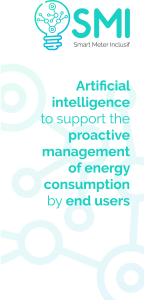The project
 SMI – Smart Meter Inclusif : Artificial intelligence to support the proactive management of energy consumption by end users.
SMI – Smart Meter Inclusif : Artificial intelligence to support the proactive management of energy consumption by end users.
The SMI – Smart Meter Inclusif project is part of a perspective linking artificial intelligence and micro-societal analysis.
One of the objectives of the project is to design a new intelligent tool that is more efficient, safe and better accepted by consumers. Thus, users of this intelligent tool will be able to collect and predict the consumption of their electrical appliances. At the same time, the consumption information is anonymized before being relayed to the energy supplier.
In parallel, the project will evaluate new techniques to improve the security level of the smart meter in a highly heterogeneous network. Ultimately, the project will lead to the development of a laboratory prototype aimed at optimizing the user’s energy management.
Finally, collaboration between the partners on a cross-border scale will propose recommendations for a common market. These will take into account the advantages and constraints of the three countries. These recommendations will therefore promote the development of international business.
In short, this European project, worth a total of nearly 2 million euros, brings together 15 academic and industrial partners. It is led by the Research Institute in Computer Sciences, Mathematics, Automation and Signal (IRIMAS) of the University of Haute-Alsace. The project is part of the Interreg V-A Upper Rhine programme and is supported by the European Regional Development Fund (ERDF) and the Swiss cantons involved in the programme.
Operational execution of the project
The conditions for the success of a project are based on professional project management, communication between partners and between coordinators and funders. The first step was to build a strong consortium. Then, the different partners of this consortium worked together to define the themes and actions of the project. Many exchanges took place with the Interreg programme during this period.
Throughout the life of the project, meetings will be held to monitor the results, to control their scientific quality in relation to the objectives set beforehand and to ensure that the schedule is respected. The aim of these regular contacts is to facilitate the smooth running of the project. It is also a question of setting up, throughout the project, administrative, financial and logistical management of the project.
In the same logic, a communication strategy has been established, and communication actions and supports will be developed in order to present the various advances of the project and its dynamics.
It is important to have a clear and precise understanding of the existing potential of smart meters of different types to balance an energy system based on renewable energies in the Upper Rhine. Therefore, we will develop a database of smart meters and an interactive map. Data from the national authorities on the different types of smart meters used in the three countries of the Upper Rhine region will be used to populate this database.
2.1. Advanced state of the art based on close work already carried out in Europe and around the world
In cooperation with the Université de Haute-Alsace, the “Zentrum für Erneuerbare Energien” (ZEE) at the University of Fribourg will conduct a literature search for relevant technical and social studies on smart meters. This research will also be extended to existing projects worldwide, in Europe and in the Upper Rhine region.
2.2. Collection of existing surveys from territorial actors
We will collect and synthesize the results of energy management surveys carried out by territorial actors in the Upper Rhine region. Among other things, they will specify the functionalities of each smart meter, their pricing mode and the main technical and social issues associated with smart meters.
This action aims to model household acceptance of smart meters by exploring two factors. On the one hand, it focuses on the social representations associated with smart meters. Then, on the other hand, it will study the levels of satisfaction, expectations and usage in relation to the technical characteristics of smart meters.
3.1. Analysis of social representations associated with smart meters
We will carry out a qualitative survey of around thirty French respondents, whether or not they are equipped with a smart meter. Two focus groups of German and Swiss respondents will then study the results in order to improve the cross-cultural validity of the study.
3.2. Study of the acceptability of smart meters by households
On the basis of the technical study of the existing offer, an acceptability survey will be conducted. This will then identify the factors and obstacles to the adoption and participatory use of existing smart meters, taking into account their technical characteristics. We will then analyse the data collected by the structural equation method to confirm an integrative model of smart meter acceptance.
3.3. Usage segmentation of smart meters
Based on the data collected from the acceptability survey and the results from the structural equation model, we will conduct a cluster analysis aimed at segmenting users according to their use of smart meters.
3.4. Study of the uses of a community of responsible consumers
In parallel to the acceptability survey, we will conduct a field study with “Alter Alsace Energie”, an alternative association of consumers committed to ecology and waste reduction. This survey aims to propose recommendations in terms of meter adaptation and nudging.
The project will assess the security level of existing solutions, resulting from the European mandates, as well as the suitability of new technologies to improve the level of security in a highly heterogeneous network.
4.1. Comparative safety analysis
We will conduct a comparative safety analysis for the rules and regulations of the three countries. That is to say, we will analyze and compare the areas of potential attacks. To do this, we first describe the security architectures of the three regulators. In a second step, we will systematically compare the security features of the three regulators.
In a third step, vulnerabilities will be identified. The study will be based not only on scientific research documents, but also on reports of practical experiences. Again, we will systematically compare these vulnerabilities.
4.2. Penetration testing of Smart Meters
This theoretical analysis serves as a basis for practical penetration tests of smart meters with real equipment. It is developed for all three regulations.
We propose in this task to rely on the identification of electrical signatures in order to automatically detect the equipment. This identification will help in energy cost forecasting, consumption management, production, storage and energy quality improvement. It will also take into account data protection and cybersecurity considerations.
5.1. Creation of a database of fingerprints of devices
All domestic equipment connected to the network has its own electrical signature. It is therefore possible to detect each appliance according to this signature. Measurements and conditioning of the electrical signals will therefore be necessary in order to develop analysis and classification algorithms.
5.2. Implementation of a new algorithm based on artificial neural networks
Electrical signatures are divided, depending on stationarity, into two groups: variations and events. We then plan to combine several processes to detect all electrical signatures. This will allow us to easily adapt to changes in the power grid and usage without relearning.
5.3. Experimental Validation
The purpose of this task will be the validation of the complete system. The smart meter with the new algorithm will be tested on the previously built database. This algorithm will then take as additional inputs the consumption, production and storage profiles.
5.4. Development of a web interface graphing smart meter data to activate user participation in the energy transition
The objective of the task is to develop a web interface that graphically displays the data from the smart meters. As a result, it will help end-users to easily analyze their energy consumption. This interface will also have a fun graphic design, can be shared, and will allow tracking consumption reductions over time by comparing them to similar households.
Several factors need to be analysed in order to identify the legal development potential of smart meters. These factors include knowledge of the current legal framework, the players and their “logic of action” as well as possible technical innovations. These analyses will therefore present proposals to adapt, improve and harmonize the current legal framework for smart meters.
6.1. Presentation of the actors involved and their “logic of action”
We will draw up a list of players involved in smart meters with their options and legal limitations in Germany and France.
6.2. Presentation of the current legal framework for smart meters and identification of development potential
A presentation of deployment strategies, standards and key European and national instruments will be made. The national study thus focuses on municipal law, licensing law, data protection law, state aid law, competition law, benchmarking law and energy law.
6.3. Proposals for the use, improvement and harmonisation of the regulatory framework
The development potentials identified, which already result from the respective legislation and the current state of the art, represent the starting points for proposals to improve and harmonise the legal framework for smart metering.
With a view to the commercial establishment of the SMI, the feasibility study aims to meet two objectives. On the one hand, it seeks to understand how households develop energy reduction practices based on the use of this device. On the other hand, it will determine the factors that explain the willingness to pay and the intention to use this smart meter.
7.1. Observation study of households using the Inclusive Smart Meter prototype
The study will observe six user households of the “Smart Meter Inclusif” prototype at three key moments in the customer experience: installation phase – learning phase – usage maturation phase. This study will thus analyze the dynamics of use at the individual and community levels of the household.
7.2. Market Test of the Smart Meter Inclusif
The objective of this market test is to understand the factors that explain the intention to use the Inclusive Smart Meter specifically and thus the willingness to pay for this innovation. It will then be a quantitative online survey conducted with a panel of 600 respondents who do not own an Inclusive Smart Meter.
This task consists in the elaboration of a white paper on smart metering showing beyond the state of the art also the perspectives for future development.
8.1. Laying the groundwork for the White Paper
The White Paper will answer the following questions:
- In which cases can smart meters be installed from a technical point of view?
- Where have new business models based on their use been developed?
- Which business models can be realised with smart meters?
- Which branches of the economy can benefit from these new business models?
8.2. Purpose of the White Paper
The project contributes to the transfer of applied research knowledge to local energy companies, their suppliers and service providers from, for example, the telecommunications sector. The white paper thus represents a starting point for the development of new products and services.
